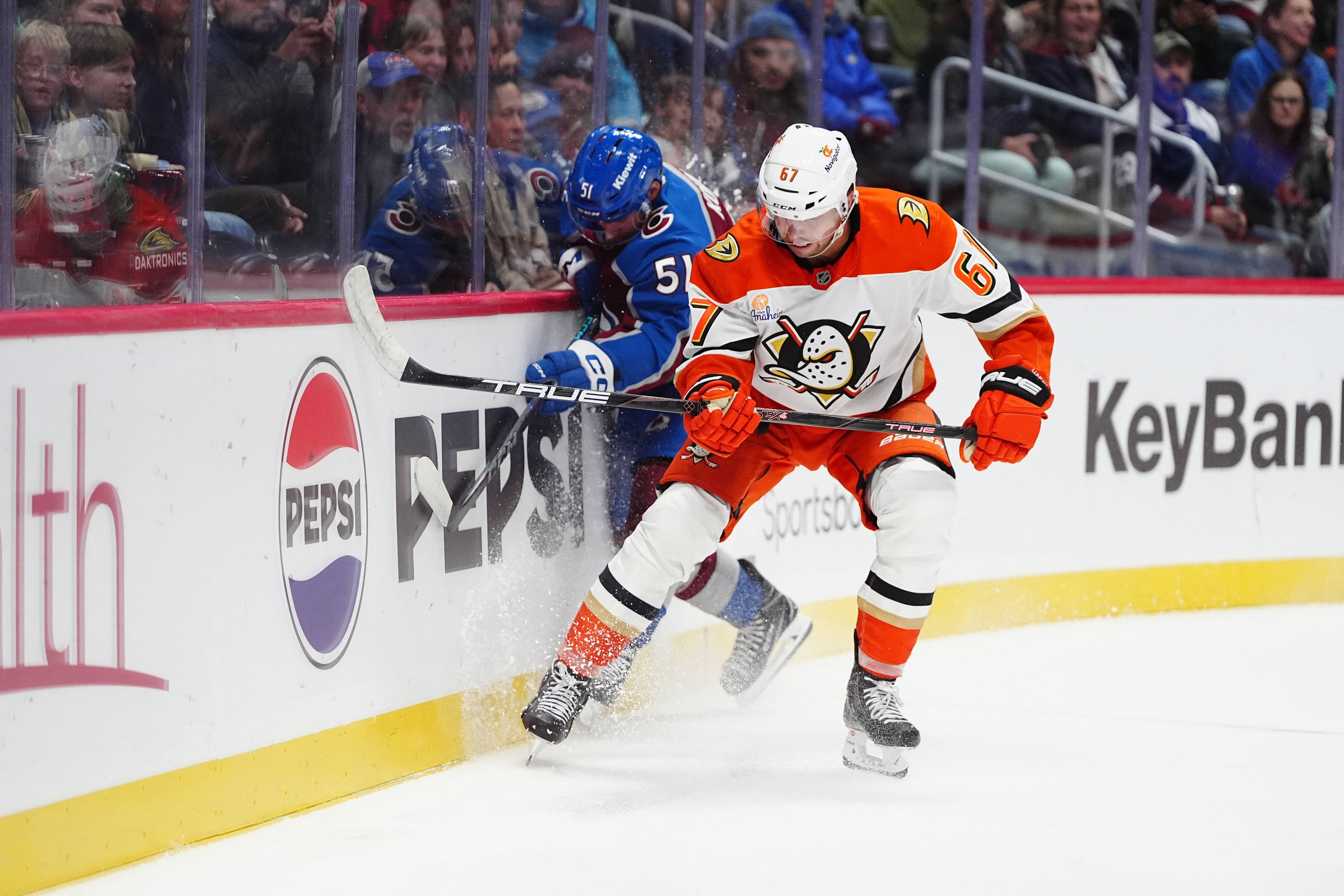AHL Stock Watch: Tristan Luneau finding his game with opportunity in San Diego

The AHL is a transformative league. For the first time, some prospects encounter challenges they can’t overcome. Either their skills aren’t good enough or they don’t fit the role the organization has envisioned for them. They have to change the game.
Some prospects manage to do it. Others, not as much.
A few of the prospects covered in this edition of Stock Watch are in the process of transforming their play. They’re adapting to the AHL and finding success because of the changes they’re making.
Stock Rising 📈
Tristan Luneau, RD, San Diego Gulls (Anaheim Ducks)
If Tristan Luneau played for another rebuilding team, he would be in the NHL, learning his trade while playing 16 to 20 minutes. But Anaheim has accumulated a lot of defensive prospects over the years and they’re competing for ice time. The team’s depth is forcing Luneau to remain in the AHL..
The defenceman is making the most of his situation. His latest hot streak —14 points in 10 games — has propelled him to the top of the production leaderboard for defencemen. His high-end scoring has come partly from his top usage and powerplay minutes, but Luneau is also learning to drive the play in repeatable and effective ways, with more short passes and give-and-goes.
While he still wants to carry the puck across zones whenever possible, his puck management is improving. He’s progressing on his path to becoming a two-way defender. Showing the harder side of his game, he pinches on opponents, absorbs rushes, slips between opponents and the puck, and constantly repositions to close passing lanes.
If Luneau can continue to develop into a more reliable puck-mover, he will cement his top-four potential.
Owen Pickering, LD, Wilkes-Barre/Scranton Penguins (Pittsburgh Penguins)
In his draft year, what we liked the most about Owen Pickering were his flashes of offence: his three-zone activations, multiple fakes at the line, and ability to shake the forecheck. His skating held back his creativity, but we projected that, in time, some mechanical improvements would open more offensive possibilities for him.
But Pickering’s development has taken a different course. In the AHL and NHL this season, he has often limited himself to one or two puck touches, finding the first available outlet. Instead of pushing the offence, he has worked to safeguard his team, closing his gap early on opponents, blocking shots, and denying space and passing lanes. His long reach and stature have become his most used tools.
This lower-event playstyle may earn Pickering a full-time NHL role quickly. He has already played 25 games for the Penguins this season as a call-up. But the team should take their time with his development. If they let his confidence grow and develop his mobility, Pickering’s puck-moving game could resurface, pushing his upside and turning him into a potential top-four defenceman.
Felix Unger Sörum, RW, Chicago Wolves (Carolina Hurricanes)
The last goal that Felix Unger Sörum scored was right at the doorstep. He saw a loose puck, sprinted to it, and pushed it across the goal line, before getting swarmed by multiple defenders and knocked to the ice.
One of the youngest players in the AHL this season, Unger Sörum concedes a size and speed advantage to the opposition most shifts, but that hasn’t prevented him from driving the net, attacking loose pucks, and protecting them from the opposition on the wall. He fights for his touches and to find good passing outlets.
His playmaking game hasn’t shined as much in the AHL. He’s still figuring out which plays to make in which situations. But considering his high pace of play, his work ethic, and powerplay time, it’s a bit puzzling why he hasn’t managed to score more so far this season.
Adding more quickness and power to his game would make his life easier in the AHL and turn him into an even better play-driver. Next year, we anticipate that his playmaking capabilities will resurface more often. Combined with the solid habits he’s currently building in the AHL, those playmaking skills could put him on track for a top-nine role in Carolina.
Matthew Savoie, RW/C, Bakersfield Condors (Edmonton Oilers)
Matthew Savoie has played his first NHL games over the past couple of weeks, performing admirably in most of them. While we anticipate that he will finish the season in the AHL, this first call-up is a great reward for a first productive AHL season.
Bakersfield hasn’t always managed to make its top prospect shine, but Savoie’s all-around strengths made him an everynight contributor. Moving from pocket to pocket, he’s always an option for teammates. He pushes his team’s transition play with crossover rushes, makes quick and deceptive lateral passes, and can finish scoring chances with precise in-stride releases.
Savoie also gets involved defensively more than the average rookie. What he lacks in stature and pure strength, he makes up for with his technical abilities. Capable of slipping between opponents and the puck, he wins his share of battles and disrupts opposing plays.
While Savoie’s game still lacks that special, upside-pushing quality, he could play the same type of hard-working, two-way game in the Oilers’ top nine.
Stock Falling 📉
Filip Mesar, RW, Laval Rocket (Montreal Canadiens)
Filip Mesar started the season with a bang, scoring five points in his first five games before an injury forced him to the sidelines for two months. After returning, he only picked up four points in 20 games. And now, we're learning that another injury will keep him away for multiple weeks.
Part of his lack of success came from his usage. Mesar only received an average of ten to eleven minutes of even-strength ice time per game and featured more on the second powerplay unit than the first.
It’s common for rookies to go through a passage like this, where they’re stuck behind other prospects and playing more of a limited role as they figured out the AHL play. Sometimes, it’s nothing to worry about: The situation results from an organization's depth and a competition for lineup spots. But in the case of Mesar, this disappointing season is another data point in a worrying development curve.
His creative, puck-rushing style may not translate well to the North American professional game. At this point, we don’t anticipate that he will be in the organization’s plans much longer.
